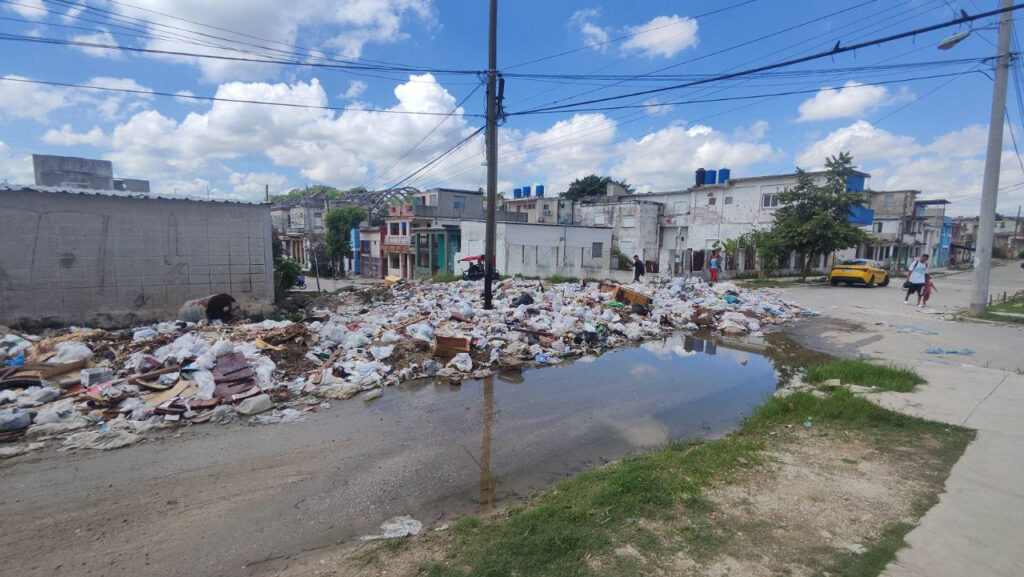
14ymedio, Juan Diego Rodríguez, Havana, 13 August 2024 — Mayelín moved a week ago to the municipality of Diez de Octubre, and now that she walks daily on the Luyanó road, she says that all the neighbors live in a kind of “olfactory numbness.” According to the 28-year-old habanera, there are more trash dumps along the road than she can count, some even in a “wild” state, with small vermin and their own ecosystems. Living among the waste is already difficult, she says, but with the smell they give off “it’s impossible to breathe.”
On the pavement, says Mayelín, “a river of sewage passes through that comes out of a broken pipe, and, on its way, it collects all the liquid from the food, dirt and rot of the garbage dumps. The smell is unbearable, and it even upsets my stomach, but I have noticed that it only bothers me.” With little time living in Luyanó, the young woman has realized that her neighbors, although they complain about the garbage and other problems, don’t seem to care about the stench of the landfills.
“I think that living constantly among garbage, without a vehicle ever passing by to pick it up or an unobstructed pipe through which the water can leave, has forced them to adapt. I, who moved recently, am still sorry, but I am horrified by the idea that we can so easily normalize this situation because we have to,” she laments.
In Barrientos, as the area of the neighborhood sports complex is known, a huge garbage dump extends for several meters
In Barrientos, as the area of the neighborhood sports complex is known, a huge garbage dump extends for several meters – horizontally and vertically – on the corner formed by the streets of Pedro Pernas and Manuel Pruna. In the middle of the road where the waste does not reach, stagnant water prevents the passage of passers-by.
“Every morning when I take the dog for a walk I have to go around the


